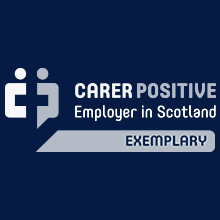The Scottish Cancer Referral Guidelines have been updated and went live on Wednesday, 6th August 2025. We are working hard to update all relevant information on the RefHelp website. If you would like to see the guidelines please click here Scottish Referral Guidelines for Suspected Cancer 2025 – gov.scot
Dysphagia is an alarm symptom and all patients with dysphagia require urgent investigation and a USOC referral.
The referrals are triaged by GI. Part of the triage process involves GI calculating the patient’s Edinburgh Dysphagia Score (EDS) to identify which patients are at highest risk of having cancer and allow appropriate prioritising. There is more information under Resources and Links on how the score is calculated. For clarity: The EDS score is used by GI at the point of triage. GPs should not calculate the EDS score and should definitely not use it as a tool for referral-decision making. Details about it have been included here as referrers may find it useful to know the factors associated with high cancer risk, as well as providing transparency around the triage process. The GP role is in referring via SCI Gateway and via the protocol providing the information that allows GI to calculate the EDS.
J.B & I.P 28-08-24
Who to refer:
- All patients with oesophageal dysphagia should be urgently (USoC) referred to upper GI for upper GI endoscopy.
- Difficulty to initiate swallow may indicate the presence of neurological disease or an ENT cause (e.g. CVA) – consider ENT/SLT referral for assessment of swallowing mechanism.
- Feeling of food sticking high in the neck or back of the throat – Please see the ENT FOSSIT page but if there is any doubt about the nature of dysphagia, especially in older patients, then refer to GI for full upper endoscopy as the site where patients localise food sticking often correlates poorly with the actual site of any lesion.
- High (neck) dysphagia with hoarse voice – consider ENT referral.
- Patients with dysphagia should NOT be referred for barium swallow from primary care without prior consultation with the appropriate specialist (GI).
Who not to refer:
- A “feeling of something in the throat” is very rarely cancer. Particularly in young non-smokers, the chance of a malignant diagnosis is low and such patients should not be referred on the cancer pathway if at all possible. See ENT FOSSIT page for advice.
How to refer:
Referral is via SGI Gateway to RIE and SJH using the Dysphagia referral pathway:
- RIE >> Gastroenterology – Medical >> LI Dysphagia (priority USOC)
- SJH >> Gastroenterology – Medical >> LI Dysphagia (priority USOC)
Regardless of the hospital referred to patients may be contacted to offer an appointment at a different site. If there are specific reasons that a patient would not be suitable for this, please make sure this information is included in the referral.
It is helpful if at the time of referral, the referrer informs the patient that they may be offered an appointment at a different site.
What Information should be included:
Protocol Text Tab
There are seven factors specifically associated with increased cancer risk in dysphagia, that are used to calculate the EDS. Age and sex are automatically detailed under the Patient Demographics tab, information on the other five factors must be completed under the Protocol Text. All must be answered either Yes or No:
- Short duration of symptoms (<6 months)
- Absence of acid reflux when presenting with dysphagia
- Food sticking in the chest rather than neck
- Recent non-intentional weight loss over 3kg.
- Progressive nature of dysphagia
It is particularly important to provide accurate information on these 7 factors specifically associated with a significantly high risk of cancer as these factors can identify a sub-group of patients with up to a 10% risk of cancer.
Information to include in referral under Referral Text Tab
Detailed clinical history to characterise dysphagia is important.
- Difficulty to initiate swallow may indicate the presence of neurological disease (e.g. CVA)
- For any patient >50 years presenting with a clear description of food sticking following initiation of swallow (oesophageal dysphagia), the concern is that this alarm symptom may herald the presence of oesophageal cancer
- Intermittent swallowing difficulty for both liquids and solids following initiation of swallow, particularly in the young patient, may indicate the presence of oesophageal dysmotility such as achalasia.
Specific points to be asked when taking the history from a patient:
- History of smoking and alcohol intake.
- History of neurological disease or CVA.
- Drugs History (e.g. bisphosphonates, NSAIDs, aspirin, nitrates, calcium antagonists). Not all information on medications provided may be included under the Medication Tab so please include details of any relevant previous medications.
- History of GORD.
- History of previous investigations for dysphagia.
Factors suggestive of sinister cause for dysphagia (both cancer or non-cancer related):
- Odynophagia.
- Hoarse voice (consider ENT referral).
- Coexisting iron deficiency anaemia.
- Coughing / choking during or after drinking.
- Progressive dysphagia particularly for solids.
- Regurgitation.
After Referral
- Once the referral is received, GI will calculate the EDS.
- Those with a high EDS score will be triaged to USoC OGD.
- Those with a low EDS score will be downgraded to ‘urgent’ OGD. The patient will be sent an pro forma letter telling them this and this will be cc’d to the GP.
Edinburgh Dysphagia Score (EDS)
There are seven factors specifically associated with increased cancer risk in dysphagia that are used to calculate the Edinburgh Dysphagia Score (EDS):
- Recent non-intentional weight loss over 3kg.
- Male gender.
- Absence of acid reflux when presenting with dysphagia.
- Food sticking in the chest rather than neck.
- Progressive nature of dysphagia
- Older patient (risk increases significantly with age).
- Short duration of symptoms (<6 months).
The EDS accurately defines a subgroup with a higher risk of having cancer (score ≥ 3.5 = 9% cancer diagnosis; EDS <3.5 = 0.5% cancer diagnosis).
Approximately 9-10% of patients presenting with dysphagia and a high EDS (≥ 3.5) will be diagnosed with oesophageal cancer. Cancer is very rare in patients with an EDS <3.5 (0.5%)
Another 15-20% will have significant non-cancer pathology requiring treatment such as complicated GORD (oesophagitis, benign strictures, Barrett’s), eosinophilic oesophagitis (EOE) or a dysmotility syndrome such as achalasia.













